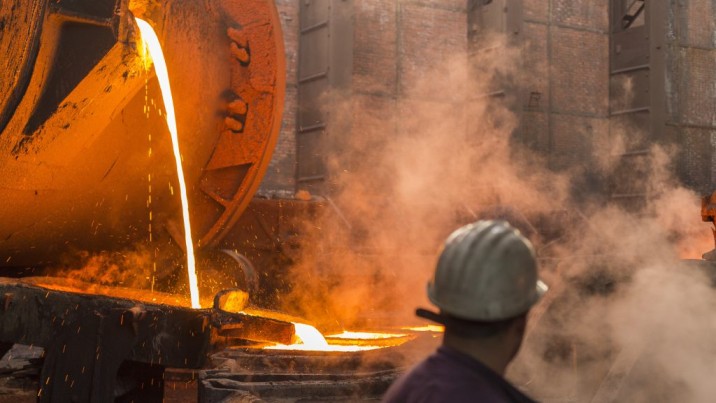India–US Trade Tensions Rise Over Steel and Auto Tariffs NMDC Limited reports a 38% drop in Q4 FY24 consolidated net profit RINL to Raise $23 Million Through Land Sales Amid Crisis

Copper prices on the London Metal Exchange hit their highest level ever, $11,104.50 per metric tonne. Traders are placing bets that the globe won't produce enough conductive metal, which is essential for connecting all of the electronic devices, motors, cables, and wind turbines that will be required as the world switches to sustainable energy. Approximately 27 million tonnes were produced by refiners and smelters last year. According to a report, 12.8 million more tonnes will be required in 2030 to maintain our net-zero path.
It’s not just futures markets that are moving. The two biggest attempted deals in the global mining sector over the past decade have both been driven by the biggest diggers’ hunger for copper, and the dearth of suitable resources out there. In each case, the suitors have struggled.
Take BHP Group Ltd’s $49 billion bid for Anglo American Plc, extended for a week on Wednesday after the target rejected an initial offer. Anglo, built up through founder Ernest Oppenheimer’s control of the global diamond trade in the early 20th century, is a potluck of good and bad businesses these days that many bidders have shied away from. The prize for BHP is a rare opportunity to build its position in copper through shares in two world-beating Chilean copper mines.
It’s the same story with Glencore Plc’s $27 billion plan last year to buy Teck Resources Ltd. The deal would have given Glencore stakes in two of the best copper pits to create the world’s third-biggest miner of the metal. It was blocked by Norman Keevil, the 86-year-old son of the company’s founder, who still controls the business via a dual-class share structure. Glencore ended up settling for a $6.9 billion purchase of Teck’s steelmaking coal assets instead.
It’s pattern we’re likely to see again, thanks to the way just four families have gained influence over some of the world’s richest mineral deposits. Companies controlled by the Keevil, Larrea, Luksic, and Lundin dynasties together produce close to one-tenth of all mined copper. The families’ combined net worth is some $82 billion. Despite that wealth, their firms suffer from relatively high capital costs, making it harder for them to invest as aggressively as booming demand might dictate.
In Mexico, Germán Larrea has built up an impregnable copper empire on either side of the border with Arizona, based in part on assets developed a century ago by the Guggenheim family and on Buenavista, a storied pit where labor clashes helped spark the Mexican revolution in 1910. Through his control of Grupo Mexico SAB de CV, the publicity-shy Larrea has built a $42 billion fortune, the country’s second-largest.
Further south in Chile, the country’s richest woman Iris Fontbona and her sons Jean-Paul Luksic and Andrónico Luksic Craig control Antofagasta Plc, the crown jewel of a sprawling conglomerate founded by Fontbona’s husband Andrónico Luksic that rose, and fell, and rose again through Chile’s tumultuous postwar years.
Swedish oil prospector Adolf Lundin was a comparable success story — first discovering Qatar’s gas fields before his family companies finally broke into the Andes in 2014. Nemesia Sarl, a Luxembourg-based company that controls the Lundin family assets, has holdings of about $5.4 billion in listed businesses.
The most modest of the group is probably Keevil, whose father parlayed a copper discovery near his northern Ontario holiday home into a series of investments that eventually became Teck. Family holdings in the Class A stock are worth about $293 million, and will lose their 60% control over voting rights when the share structure is unwound in 2029.
It’s tempting to say it doesn’t matter who controls the world’s copper. But that’s not quite right. Investors demand higher returns from illiquid businesses with dominant shareholders, and that raises their cost of capital — ultimately lifting the bar that potential mining projects have to clear before they’re considered profitable. That’s deterring the investment that the energy transition desperately needs.
Mining is a speculative activity that’s not so very different from venture capital or film production. For the whole industry to work, there needs to be a clear path for those deposits to be developed by progressively bigger miners who can take advantage of greater and greater economies of scale, cost and finance. The barons’ hold on some of the world’s best pits is blocking that road to riches.
Also Read : India's imported aluminium scrap costs fall on weekly basis due to monsoon delays Aluminium futures fall on low demand